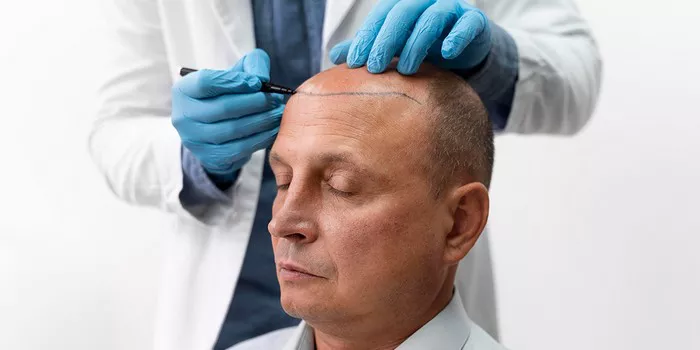Hair loss is a common concern for both men and women, and it can have a significant impact on one’s self-esteem and overall appearance. Hair transplantation has become a popular solution for those seeking to restore a full head of hair. When considering hair transplantation, one of the primary decisions is whether to use your own hair or opt for donor hair from another source. In this article, we will explore the numerous benefits of using your own hair for transplantation and address some frequently asked questions about the procedure.
1. Natural Appearance and Texture
One of the most compelling advantages of using your own hair for transplantation is the natural appearance and texture it offers. Your own hair will match the color, thickness, and texture of your existing hair, ensuring a seamless and undetectable result. This natural harmony is often challenging to achieve when using donor hair, as it may not perfectly match your own hair’s characteristics.
2. Lower Risk of Rejection
When using your own hair for transplantation, there is a significantly lower risk of rejection or adverse reactions. Since the hair is sourced from your own body, your immune system is less likely to identify it as a foreign substance and mount an immune response. This reduced risk of rejection makes the procedure safer and more successful in the long run.
3. Longevity and Sustainability
Transplanted hair that originates from your own scalp is expected to have a longer lifespan compared to donor hair. This is because your hair is adapted to your unique biological environment, ensuring it continues to grow and thrive for an extended period. In contrast, donor hair may not have the same longevity, which can result in the need for additional procedures to maintain the desired results.
4. Reduced Maintenance
Another notable advantage of using your own hair for transplantation is the reduced maintenance it requires. Transplanted hair from your own scalp behaves just like your natural hair. You can wash, style, and groom it as you would with your existing hair. Donor hair may require special care or maintenance, which can be inconvenient and time-consuming.
5. Faster Healing and Recovery
The recovery process is often quicker and more comfortable when using your own hair for transplantation. Since there is no need for your body to adapt to foreign hair, the healing process tends to be smoother and less prone to complications. This means less downtime and a quicker return to your regular activities.
6. Personalized Results
Using your own hair allows for a more personalized and tailored approach to hair transplantation. The surgeon can design the hairline and distribution of grafts to match your unique facial features and preferences, ensuring a result that is harmonious with your overall appearance. This level of customization is often challenging to achieve with donor hair.
7. Minimal Risk of Allergic Reactions
Allergic reactions to donor hair are a potential concern, and they can be uncomfortable and even dangerous. When using your own hair, the risk of allergic reactions is virtually eliminated, as your body is already accustomed to the hair’s proteins and structure.
FAQs on Using Your Own Hair for Transplantation
1. Can anyone use their own hair for transplantation?
Most individuals can use their own hair for transplantation, but the eligibility depends on factors such as the availability of donor hair, the health of the scalp, and the individual’s overall medical condition. Consultation with a qualified hair transplant surgeon is essential to determine eligibility.
2. Is there a limit to the amount of hair that can be transplanted from one’s own scalp?
The amount of hair that can be transplanted depends on several factors, including the density of the donor area, the quality of the hair, and the specific technique used. A skilled surgeon can assess these factors during a consultation and provide guidance on the potential amount of hair that can be safely transplanted.
3. Does using your own hair for transplantation leave scars?
Like any surgical procedure, hair transplantation can result in some scarring, but when performed by an experienced surgeon, these scars are usually minimal and well-hidden. Newer techniques, such as Follicular Unit Extraction (FUE), are known for leaving less noticeable scars.
4. How long does it take for transplanted hair to grow and achieve the desired results?
Hair transplantation results vary from person to person, but in general, you can expect to see initial growth within a few months, with the final results becoming evident after about a year. It’s essential to have realistic expectations and be patient during the growth process.
5. Are there any risks or complications associated with using your own hair for transplantation?
While the risks are relatively low when using your own hair, as with any surgical procedure, there can be potential complications. These may include infection, scarring, or suboptimal graft survival. To minimize these risks, it’s crucial to choose a qualified and experienced surgeon and follow post-operative care instructions diligently.
Conclusion
Using your own hair for transplantation offers a wide range of benefits, including a natural appearance, reduced risk of rejection, long-lasting results, and minimal maintenance. The personalized nature of the procedure, along with the elimination of allergic reactions, makes it a preferred choice for many individuals looking to restore their hair. However, the suitability of using your own hair for transplantation may vary from person to person, so it’s crucial to consult with a qualified hair transplant surgeon to determine the best approach for your specific needs and goals. With the right guidance and expertise, hair transplantation can provide a successful and lasting solution to hair loss concerns.

